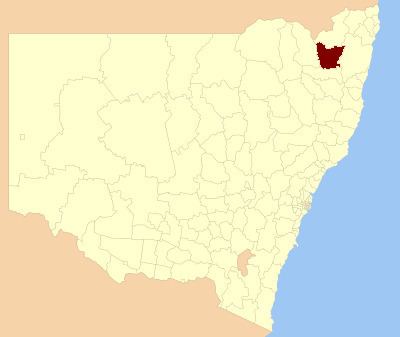Population 8,999 (2015 est) Area 5,487 km² Region New England | Federal division Division of New England | |
 | ||
Mayor Colin Price (Unaligned) Points of interest Australian Standing Stones, Boundary Falls, Emmaville Mining Museum, Raspberry Lookout, Craigieburn Tourist Park | ||
Q1 for nominated candidates in glen innes severn council 2016 elections
Glen Innes Severn is a local government area in the New England region of New South Wales, Australia. The council serves an area of 5,487 square kilometres (2,119 sq mi) and is located adjacent to the New England Highway. The council was formed by the amalgamation of Severn Shire and Glen Innes City Council.
Contents
- Q1 for nominated candidates in glen innes severn council 2016 elections
- Map of Glen Innes Severn Shire NSW Australia
- Q2 for nominated candidates in glen innes severn council 2016 elections
- Main towns and villages
- Demographics
- Current composition and election method
- References
Map of Glen Innes Severn Shire, NSW, Australia
The Mayor of Glen Innes Severn Council is Cr. Colin Price, who is unaligned in any political party.
Q2 for nominated candidates in glen innes severn council 2016 elections
Main towns and villages
The council area includes the town of Glen Innes and villages including Emmaville, Deepwater, Wellingrove, Glencoe, Stonehenge and Red Range.
Demographics
At the 2011 census, there were 8,656 people in the Glen Innes Severn local government area, of these 49.5 per cent were male and 50.5 per cent were female. Aboriginal and Torres Strait Islander people made up 5.6 per cent of the population which is approximately double both the national and state averages. The median age of people in the Glen Innes Severn Council area was 46 years; nearly ten years higher than the national median. Children aged 0 – 14 years made up 18.1 per cent of the population and people aged 65 years and over made up 22.0 per cent of the population. Of people in the area aged 15 years and over, 48.7 per cent were married and 14.1 per cent were either divorced or separated.
Population growth in the Glen Innes Severn Council area between the 2001 census, the 2006 census, and the 2011 census was marginal. When compared with total population growth of Australia for the same periods, being 5.78 per cent and 8.32 per cent for each five–year period respectively, population growth in the Glen Innes Severn local government area was significantly lower than the national average. The median weekly income for residents within the Glen Innes Severn Council area was below the national average.
At the 2011 census, the proportion of residents in the Glen Innes Severn local government area who stated their ancestry as Australian or Anglo-Saxon exceeded 92 per cent of all residents (national average was 65.2 per cent). In excess of 69 per cent of all residents in the Glen Innes Severn Council area nominated a religious affiliation with Christianity at the 2011 census, which was significantly higher than the national average of 50.2 per cent. Meanwhile, as at the census date, compared to the national average, households in the Glen Innes Severn local government area had a significantly lower than average proportion (2.7 per cent) where two or more languages are spoken (national average was 20.4 per cent); and a significantly higher proportion (93 per cent) where English only was spoken at home (national average was 76.8 per cent).
Current composition and election method
Glen Innes Severn Council is composed of seven Councillors elected proportionally as a single ward. All Councillors are elected for a fixed four-year term of office. The Mayor is elected by the Councillors at the first meeting of the Council. The most recent election was held on 10 September 2016, and the makeup of the Council is as follows:
The current Council, elected in 2016, in order of election, is:
